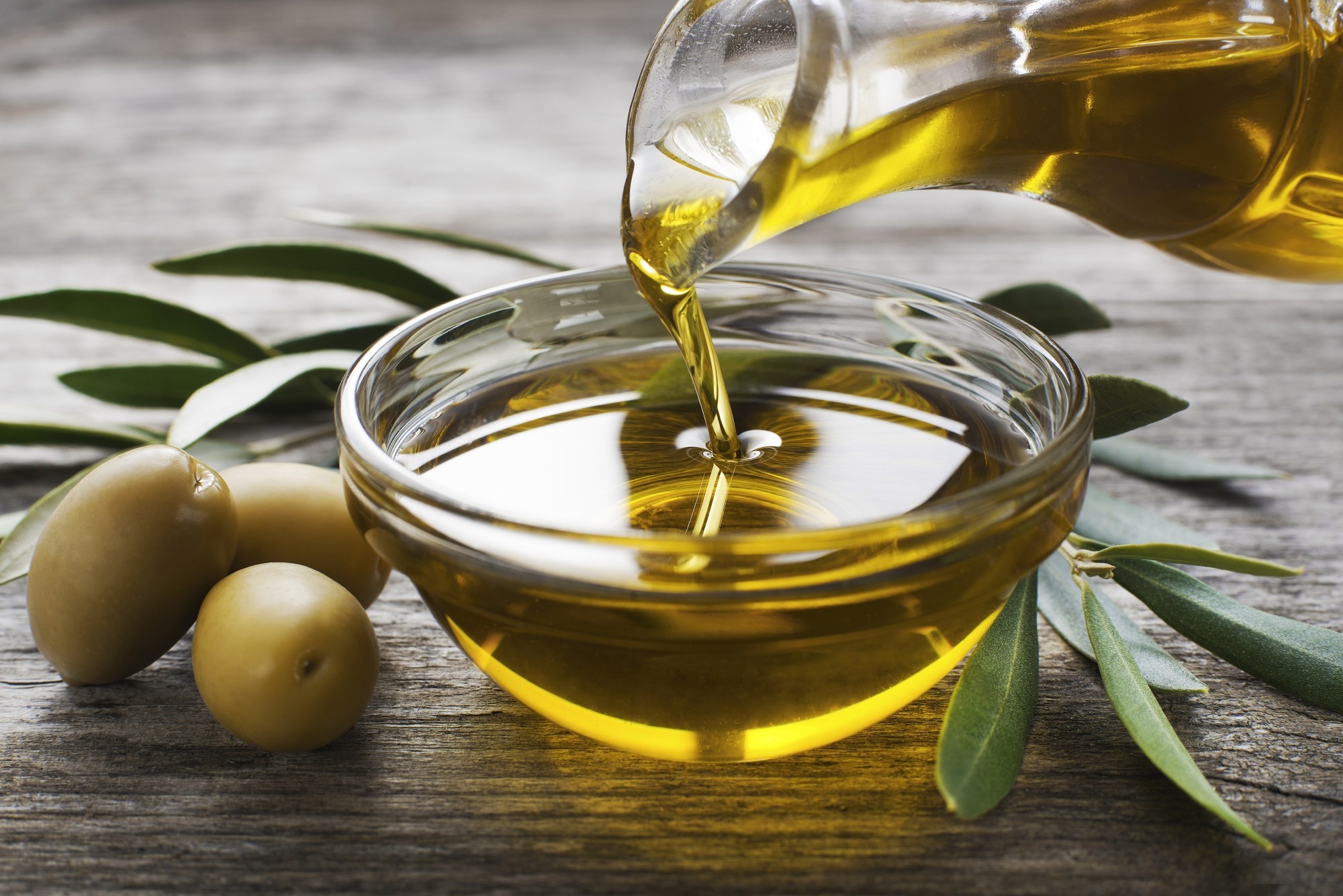A recent study published in the Nutrients Journal evaluated the effects of phenolic compounds in extra virgin olive oil (EVOO) on the proliferation, cell cycle, migration, and antigenic profile of human fibroblasts.
 Study: The Benefits of Olive Oil for Skin Health: Study on the Effect of Hydroxytyrosol, Tyrosol, and Oleocanthal on Human Fibroblasts. Image Credit: DUSANZIDAR/Shutterstock.com
Study: The Benefits of Olive Oil for Skin Health: Study on the Effect of Hydroxytyrosol, Tyrosol, and Oleocanthal on Human Fibroblasts. Image Credit: DUSANZIDAR/Shutterstock.com
Background
Wound refers to a break in the continuity of the skin or mucus membranes caused by chemical, mechanical, or physical agents and is associated with a loss of substance/function.
These events activate the wound-healing process that involves hemostasis, inflammation, proliferation, and remodeling. Fibroblasts have a vital role in wound healing. Bioactive components in some vegetables, including EVOO phenolics, can stimulate fibroblasts.
EVOO primarily consists of triacylglycerols, fatty acids, and mono and diacylglycerols. Over 230 minor compounds in EVOO represent 2% of its weight.
More than 30 different types of phenolics are present in olive oil, and tyrosol (tyr), hydroxytyrosol (htyr), and oleocanthal (ole) are the highest in concentration. Several studies have reported the beneficial effects of EVOO, but there is limited information on the effects of EVOO polyphenols on tissue regeneration.
About the study
In the present study, researchers evaluated the effects of tyr, ole, and htyr from EVOO on cultured human fibroblasts' antigenic profile, migration, proliferation, and cell cycle.
Reference standards of tyr, htyr, and ole, and the human fibroblast cell line, CCD-1064Sk, were acquired. Cell proliferation was tested using the MTT assay, measuring the reduction of MTT to formazan by mitochondrial succinate dehydrogenase.
Fibroblasts were seeded in an estrogen-free medium and cultured for 24 hours (h) under standard conditions. The medium was replaced with another containing one of the phenolic compounds at varying doses.
The control group included untreated cells. The team plotted concentration-response curves and calculated half-maximal effective concentration values.
The effect of phenolics on fibroblast migration was investigated using a culture inserts assay, measuring cell capacity to migrate into cell-free spaces/gaps. Flow cytometry was used to study the effects of phenolics on the cell cycle.
Cells were labeled with fibronectin and α-actin-specific monoclonal antibodies after 24h treatment with phenolic compounds. Cells were analyzed to determine the antigenic profile.
Findings
Fibroblasts treated with tyr or htyr at concentrations of 10-5 M and 10-6 M and with ole at 10-6 M, 10-7 M, and 10-8 M showed significantly increased growth capacity, respectively, compared to untreated controls.
Cell migration increased by htyr treatment at 10-5 M at treatment initiation and four h, eight h, 12h, and 24h post-treatment. Treatment with htyr at 10-6 M significantly increased fibroblast migration at 24h.
Treatment with tyr at all tested concentrations caused a significant increase in fibroblast migration at 12h and 24h post-treatment. Likewise, ole treatment at 10-6 M caused a significant increase in migration at 12h and 24h and at all time points at 10-7 M concentration.
No significant differences were observed in the percentage of cells in any phase of the cell cycle between treated cells and untreated controls for any treatment group.
Further, malignant transformation or DNA aneuploidy was not observed. Fibroblast treatment with phenolic compounds significantly increased α-actin and fibronectin expression compared to untreated controls at all tested concentrations, except for treatment with tyr at 10-5 M, which yielded no significant changes relative to controls.
Conclusions
The EVOO phenolic compounds significantly increased fibroblast proliferation, migration, and expression of key markers in wound healing (α-actin and fibronectin) with no cell cycle alterations.
These findings provide insights into processes occurring during the proliferation phase of wound healing when fibroblast proliferation and migration are elevated.
Angiogenesis is crucial for effective wound healing, and fibronectin can modulate the formation of new vessels.
This healing phase also involves wound contraction, wherein myofibroblasts are essential that are believed to originate from resident fibroblasts. The increase in α-actin could indicate differentiation into myofibroblasts, promoting tissue regeneration.
The findings are promising regarding the effects of polyphenols in soft tissue regeneration. However, the researchers only studied one cell type in the skin, which also has other important cell populations.
Above all, the study provided valuable insights into the effects of polyphenols on fibroblasts, and further research is required to uncover the underlying mechanisms for developing therapeutics for wound treatment.